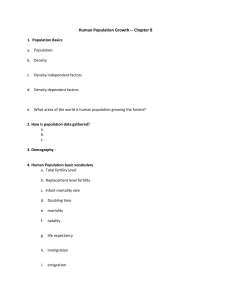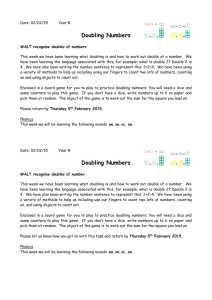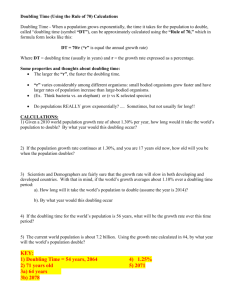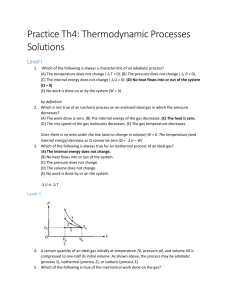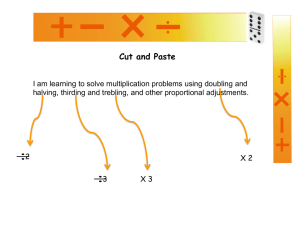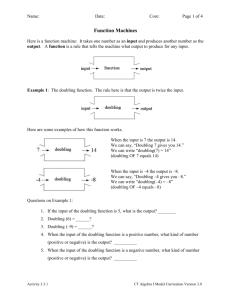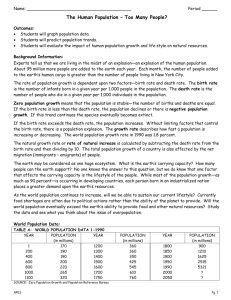Math Review Answers
advertisement
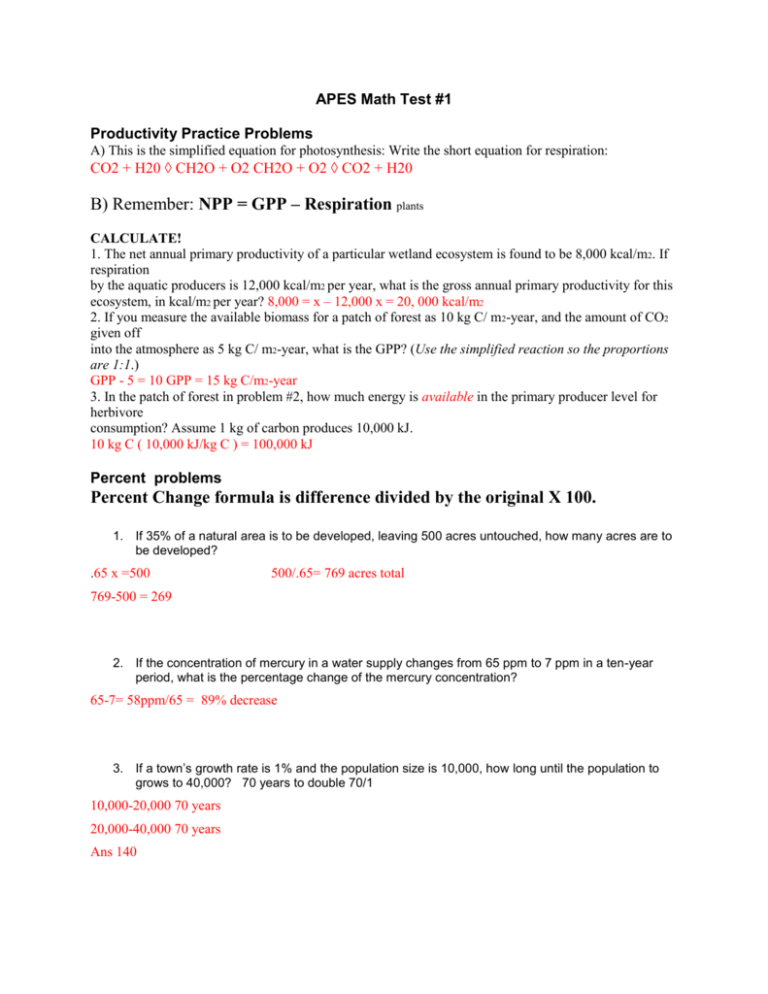
APES Math Test #1 Productivity Practice Problems A) This is the simplified equation for photosynthesis: Write the short equation for respiration: CO2 + H20 CH2O + O2 CH2O + O2 CO2 + H20 B) Remember: NPP = GPP – Respiration plants CALCULATE! 1. The net annual primary productivity of a particular wetland ecosystem is found to be 8,000 kcal/m2. If respiration by the aquatic producers is 12,000 kcal/m2 per year, what is the gross annual primary productivity for this ecosystem, in kcal/m2 per year? 8,000 = x – 12,000 x = 20, 000 kcal/m2 2. If you measure the available biomass for a patch of forest as 10 kg C/ m2-year, and the amount of CO2 given off into the atmosphere as 5 kg C/ m2-year, what is the GPP? (Use the simplified reaction so the proportions are 1:1.) GPP - 5 = 10 GPP = 15 kg C/m2-year 3. In the patch of forest in problem #2, how much energy is available in the primary producer level for herbivore consumption? Assume 1 kg of carbon produces 10,000 kJ. 10 kg C ( 10,000 kJ/kg C ) = 100,000 kJ Percent problems Percent Change formula is difference divided by the original X 100. 1. If 35% of a natural area is to be developed, leaving 500 acres untouched, how many acres are to be developed? .65 x =500 500/.65= 769 acres total 769-500 = 269 2. If the concentration of mercury in a water supply changes from 65 ppm to 7 ppm in a ten-year period, what is the percentage change of the mercury concentration? 65-7= 58ppm/65 = 89% decrease 3. If a town’s growth rate is 1% and the population size is 10,000, how long until the population to grows to 40,000? 70 years to double 70/1 10,000-20,000 70 years 20,000-40,000 70 years Ans 140 5. If it took a country 40 years to double its population, what was its growth rate? 70/r = 40 so 70/40 = 1.75%APES: Doubling Time (Using the Rule of 70) Calculations: Doubling Time - When a population grows exponentially, the time it takes for the population to double, called “doubling time (symbol “dt”), can be approximately calculated using the “Rule of 70,” which in formula form looks like this: dt = 70/r (dt) doubling time r= rate of growth (“r” is sometimes written as “k”) where dt = doubling time (usually in years) and r (or “k’) = the growth rate expressed as a percentage. NOTE: 5% must be entered as 5 instead of 0.05. CALCULATIONS: 1.) Given a 2006 world population growth rate of about 1.30% per year, how long would it take the world’s population to double? By what year would this doubling occur? 70/1.3 = 54 years 2) If the population growth rate continues at 1.30%, and you are 17 years old now, how old will you be when the population doubles? 17 + 54 years = 71 years old 3) Scientists and Demographers are fairly sure that the growth rate will slow in both developing and developed countries. With that in mind, if the growth averages about 1.10% over a doubling time period, how long will it take the world’s population to double? By what year would this doubling occur, and how old would you be if you are 17 years old now? 7 billion/ 1.1 = 63 years 2014 + 63 = 2077 17 years currently + 63 = 80 years old 4) If the doubling time for the world’s population is 56 years, what will be the growth rate over this time period? 70/r = 56 70 = 56r 70/56 = 1.25 5) The current world population is about 7 billion. Using the growth rate calculated in #4, by what year will the world’s population double? How old will you be if you are 17 years old now? (Don’t get fooled by this question, only use relevant information when making your calculation) Already calculated 56 years is the doubling. So 17 + 56 = 73 years old. Some properties and thoughts about doubling time: > The larger the “r”, the faster the doubling time. > “r” varies considerably among different organisms: small bodied organisms grow faster and have larger rates of population increase than large-bodied organisms. (Ex. Think bacteria vs. an elephant) > Do populations REALLY grow exponentially? .... Sometimes, but not usually for long!!
